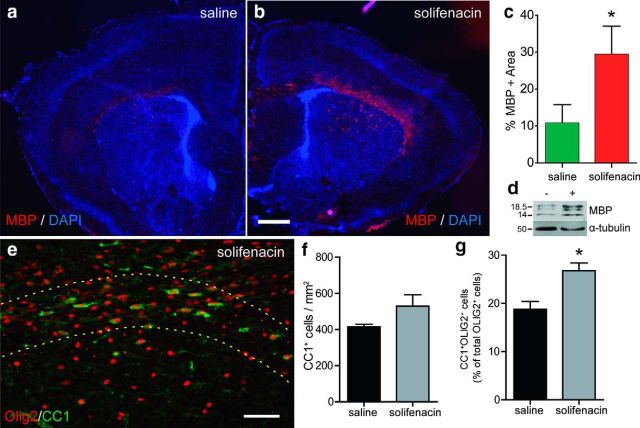Figure 4.
Systemic treatment with an M3R antagonist promotes precocious oligodendrocyte differentiation in vivo. Neonatal mice received daily subcutaneous injections of either saline or 10 mg/kg solifenacin, a blood–brain barrier-permeable M3R antagonist, from 4 d postnatally until being killedon day 9 (n = 4). a, b, Oligodendrocyte differentiation and myelination was assessed by immunoflourescence staining for MBP in saline- (a) or antagonist (b)-injected animals. The percentage area of myelinated corpus callosum was quantified in each animal and shown in c (mean ± SEM). M3R antagonist treatment induced a significant increase in myelinated area (n = 4 animals per group). d, Solifenacin increased the amount of MBP protein normalized to tubulin (n = 3 mice per group). CC1+OLIG2+ oligodendrocyte cells were counted in corpus callosum and compared with total OLIG2+ oligodendrocyte lineage cells (e). There was a significant increase in the proportion of differentiating oligodendrocytes in solifenacin-treated animals. f, Overall density of CC1+ cells was also increased in corpus callosum. *p < 0.05, t test. Scale bars: 500 μm (a, b), 50 μm (c).

